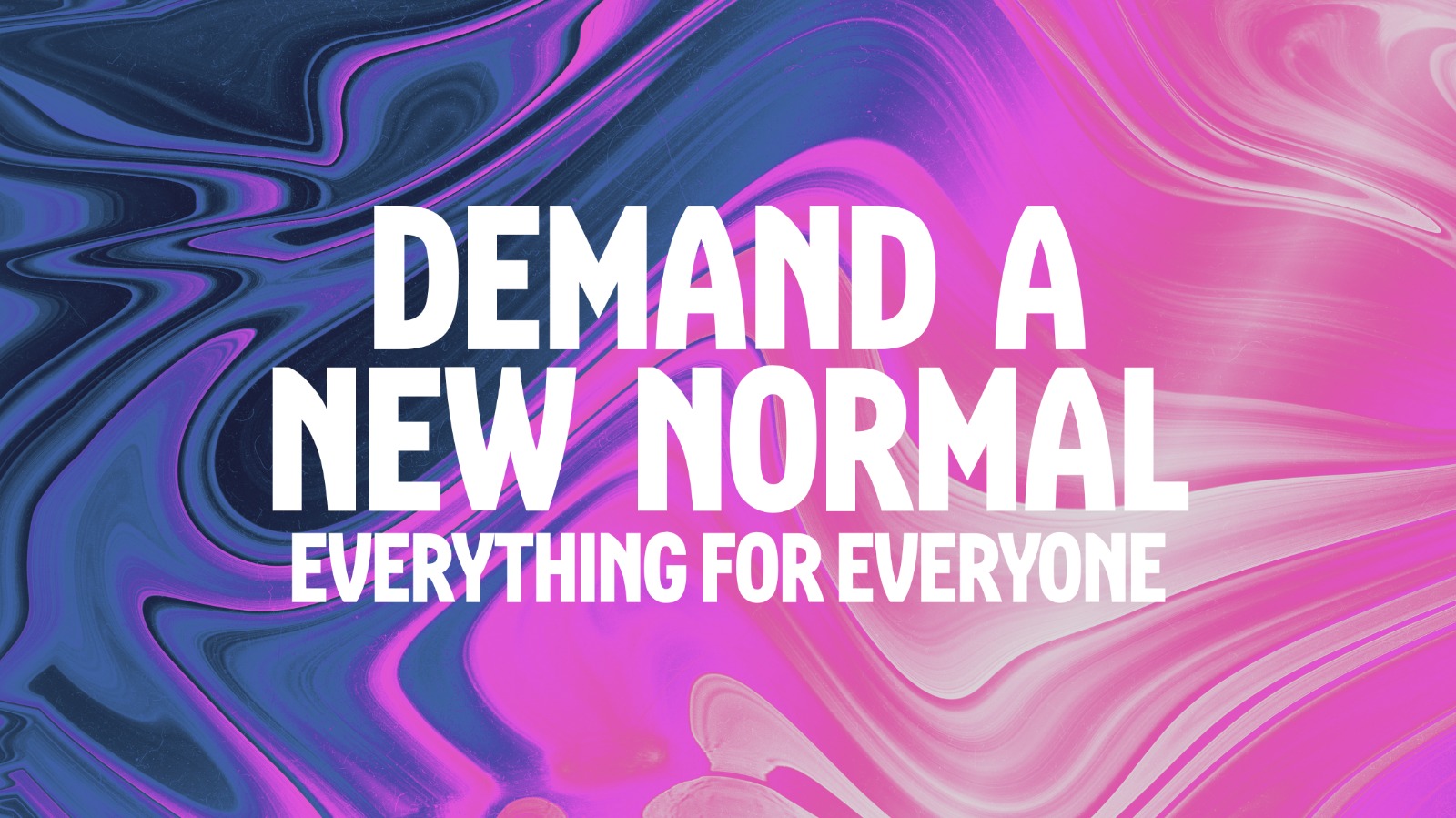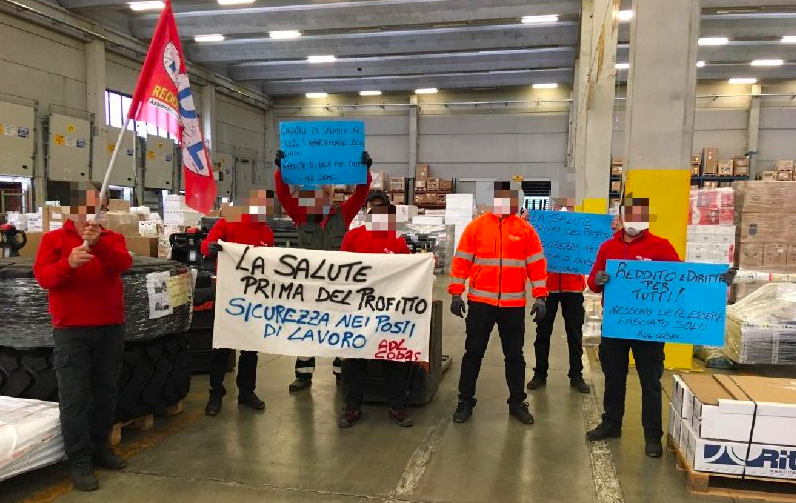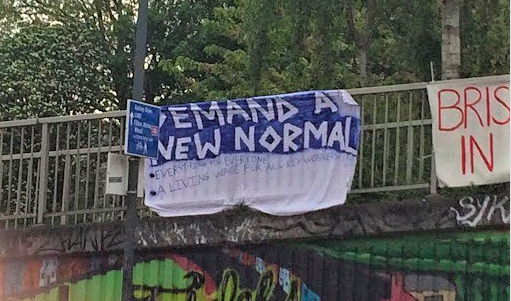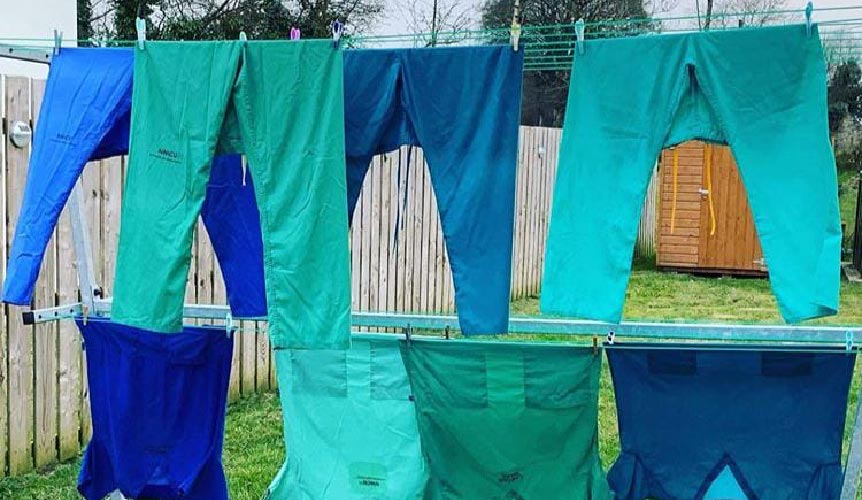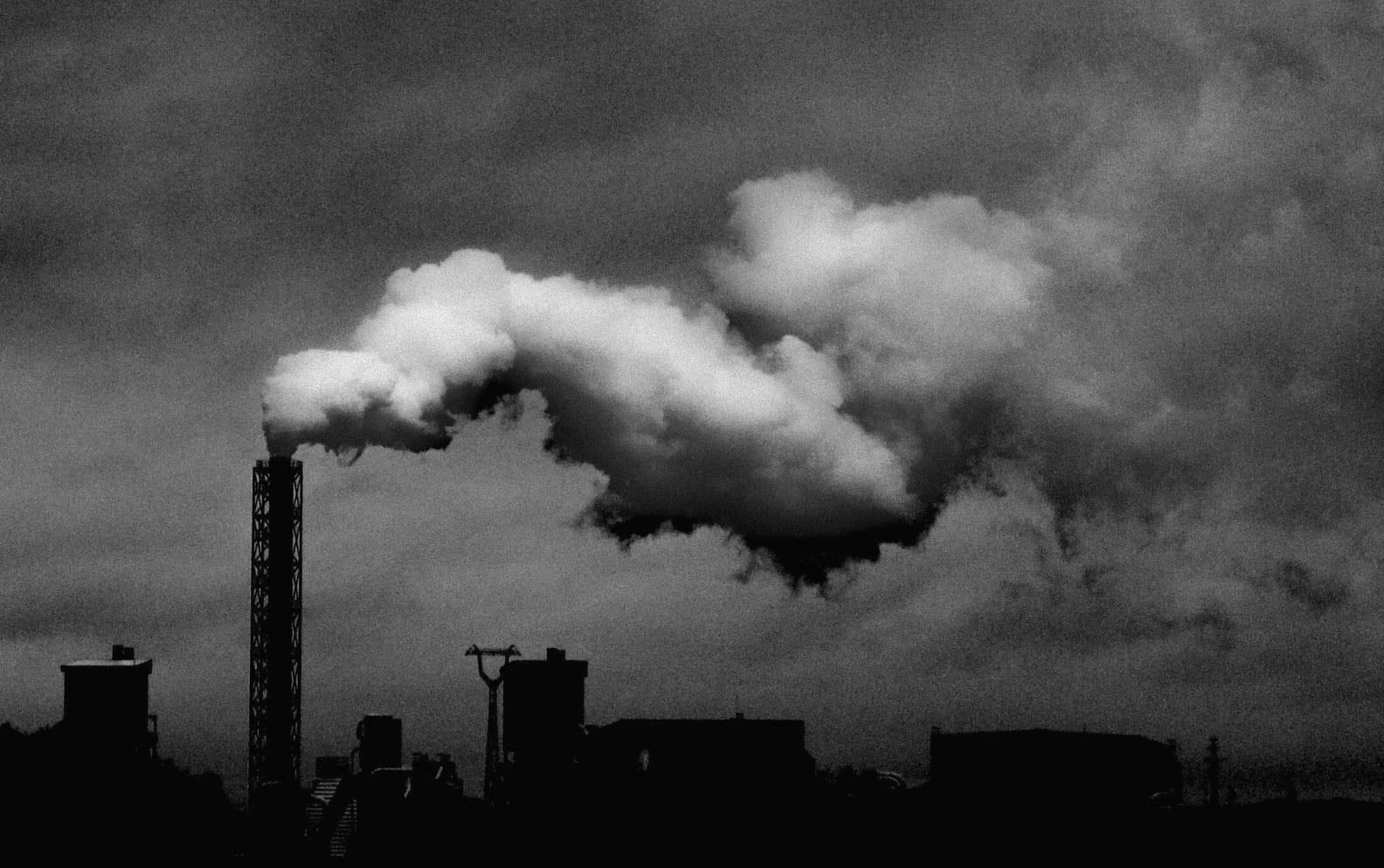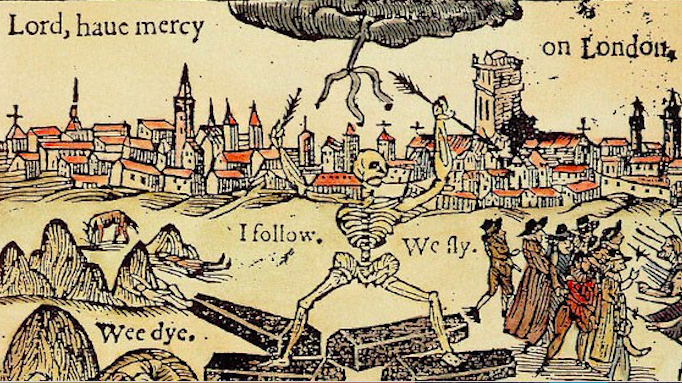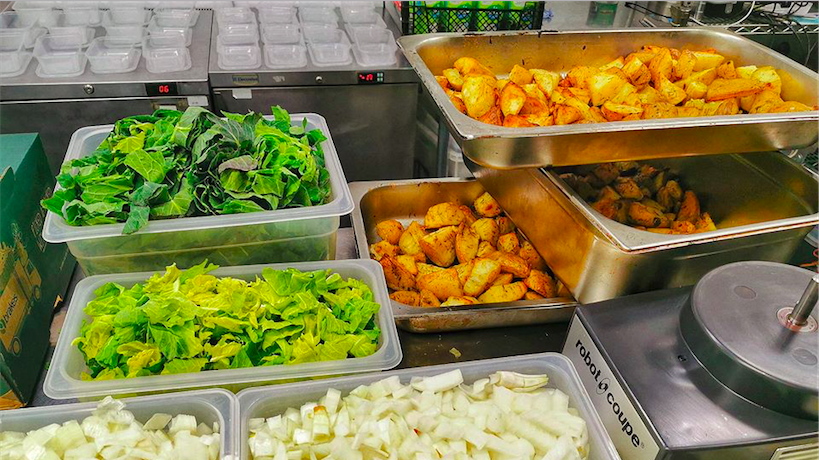On Covid and Uncherished Life
By Flannán Delaney
In the sea just off Grenada is an underwater sculpture park. Circles of concrete human figures, bolted together but each one individual, hold each other’s hands and gaze out into the great expanse of the ocean, as corals and seaweeds claim them. Drowned faces with African features emerge from rock and sand. A man sits typing, his words unreadable; women raise their hands towards the glow of sunlight at the surface; a lost world, overtaken by water.
The work is usually described as a memorial to the enslaved people who died in the Middle Passage between Africa and the West Indies, and especially to those who were cast overboard in stormy seas, their bodies just another cargo. Ballast.
An interesting aspect to this is that, if you look up the artist Jason deCaires Taylor’s original commentary on the work, it’s clear that he did not intend this reading. Instead, he had in mind a fairly vague statement about human adaptability; a standard sort of neoliberal positivity, with the signature blandness of so much “public art”. It took local commentators — from the same islander population whose features had been cast and reproduced in the faces of those underwater figures — to see what he could not, and to transform the sculptures into an unofficial memorial. Just as, all over the world in May, statues celebrating the racist past were torn down by many hands, so too this monument was erected by popular consent and appropriation. It was not given, but taken, and in taking was transformed from “public art” into something stranger, greater, infinitely more haunting.
On the 11th of April Mel Baggs died. For most of hir adult life, Mel had been writing about disability and autism; about the experience of having a body and mind that betray you, but even more so about being perceived as valueless, existing at the borders of what society recognises as human. Much of hir writing was hosted at a blog titled ‘Ballastexistenz’, a term the Nazis used in propaganda to describe the lives of disabled people, whom they saw as unnecessary, a waste of life; literally, ‘Ballast Existence’.
The cause of Mel’s death is believed to be respiratory failure. Sie was 39 years old. Hir family have not stated whether sie was suffering from Covid-19, and it may not even be known, but it’s clear from Mel’s last few blog posts that sie was struggling to access the medical care sie needed amidst the pandemic. At very least, sie would be counted, then, as one of 2020’s ‘Excess Deaths’. So far, the UK has had somewhere around sixty thousand of these; the US, something like three hundred thousand.
Counting excess deaths is the last resort of the historian where epidemiological records are patchy. It’s been used to estimate the death toll from the Black Death, from the cholera epidemics that swept through the poor of Europe in the nineteenth century, from the influenza that killed in the chaotic and under-documented aftermath of the First World War. And now, in 2020, it is our best way of counting Covid’s silent dead. Many of those, the excess, are estimated to be among Covid’s direct victims, infected with the virus and dying from its effects, although the officially recorded causes of death do not always reflect this. At the height of the first wave, tests were hard to come by and concentrated on hospitals. And despite the national focus on the NHS, much of the dying has happened quietly, in isolated rooms in care homes, in bedsits and one-bedroom flats.
In June, as lockdown prematurely eased and the summer warmth began to breed life from dead things, they began to find the bodies, several hundred in London alone. On the second of the month, the government released the report which it had commissioned into the racial disparities in Covid-19 deaths. It had made several attempts to delay doing so. The report was not ready; the report was ready, but not ready enough; this was, we were assured, definitely nothing to do with the mass international protests against racism occurring at the time of its release. Finally, under pressure, the report was produced, and was striking mostly for its shallowness; it merely underlined facts already known. Those who had died so far had been, overwhelmingly, old; they had also been disproportionately — extremely disproportionately — Black, or South Asian; they had been poor. Men were somewhat more likely to die than women. Nothing was ventured as to the causes of these inequalities. We know that the racial disparity, in particular, does not seem to have been genetic; it also cannot be reduced to poverty, although poverty was an independent factor which affected both the chance of getting Covid and the chance of surviving it.
The idea that this might, itself, be an emergency — an emergency within our emergency — was never seriously entertained. The report seems to have had no impact upon the loosening of lockdown, the march back to a middle class normality of garden centre and IKEA visits, a normality in which cleaners and builders packed the tubes which carried them to their unZoomable jobs, wearing, at best, improvised PPE which they had not been trained to use.
It is difficult to translate the term ‘Black Lives Matter’ into American Sign Language, and different versions have been favoured at different times. On June 8th, the LA Times reported that the translation currently most popular, “begins with four fingers cut across the brow, followed by two thumbs drawn up like breath from navel to chest, ending with a fierce tug with two hands down from the chin into fists toward the heart. Black. Life. Cherish.” That imperative verb does a lot of work: it speaks to the uniqueness and vulnerability of black life, invokes an attitude of wonder and tenderness, and conveys a particular instruction. There is nothing impersonal about cherishing; it cannot be done from a position of disinterest. The ethical demand that we cherish one another cannot be reduced either to a set of rules or to utilitarian calculus. And yet there is something primary, irreducible, about this moral position. Moreover, the replacement of atomic individual Lives with the holistic Life reminds us that each life ended prematurely is a hole in a community, the life of all impoverished by each loss.
‘Black Lives Matter’ is a stark slogan, one which challenges through its simplicity; it exposes and draws attention to a social order in which this seemingly minimal claim is nonetheless not recognised. “Black+Life+Cherish” [an approximation, of course; it is difficult to translate signed languages into spoken ones, which lack their sophisticated grammar of space] is more expansive; rather than the revealing negative space of the original, it is an impossibly, joyfully expansive demand. What would it have looked like, to cherish black life in this pandemic? To cherish disabled life, immigrant life, the life of those in poverty? To cherish the lives of those who work in care homes, and those who live there?
One of disabled politics’ most intentionally alienating terms is the phrase ‘temporarily able-bodied’. It is an aggressive reminder that being non-disabled can never be a stable and permanent identity. Disability can appear un-announced with a great suddenness, but it is also a consequence of the relentless, slow inevitability of cellular decay. Put simply, if you do not die young, you are likely to die at least somewhat disabled. Much of the language we use about both disability and ageing is designed to obfuscate this fact. But much of the time, ageism and ableism are two names for one attitude, one which seeks to determine which lives are livable and valuable, and which are something less than that.
The UK sailed into this pandemic with a health service so chronically under-resourced that it didn’t even have the slack to deal with annual flu epidemics without going into regular crises. Nonetheless, the NHS managed, through a stupendous effort, not to turn into the ‘war zone’ seen in Italian hospitals at the start of the pandemic. What hasn’t been talked about so much is that it did this partly by means of a robust system of triage — a series of decisions about which lives to fight for. Many of these decisions were humane and realistic, based on the wisdom that ventilating a frail body sometimes causes only suffering without meaningfully extending life. But it’s important that we recognise that some of these decisions were neither. When learning disabled and autistic people were subjected, en masse, to Do Not Resuscitate orders with no justification other than their neurodivergence or low measured IQ, it was not a matter of humanity or realism. When elderly patients were dropped off to die in care homes which were not capable of isolating them correctly, those decisions were neither humane, realistic nor wise.
Cherishing life doesn’t mean opposing DNRs on principle. They remain an important tool for patient autonomy, and allow people to decide not to be dragged through painful procedures that will only minimally increase their chance of survival. But that element of choice is vital. Where they’re used well, they should be a reflection of the patient’s own values — either stated directly or, if necessary, inferred by family and caregivers. Where they’re used badly, they are a reflection instead of medical professionals’ lack of imagination, their inability to conceive of a life lived well with disability.
That same lack of imagination is evident in the laments that ‘healthy, young’ people are subject to movement restrictions when those who died have almost all been old; or have, at least, almost all been either old or sick; or at any rate, all either old or sick or fat. The unspoken conclusion here is that the losses that we are seeking to avoid were not, after all, so great; in the words of one newspaper commentator, they would (unlike, presumably, the rest of us) “have died anyway”. If the precautions already being taken are situated as excessive, how are we supposed to argue for more, for an excess on top of the excess; to point out that those sick, old lives have not been over but undervalued?
This implication that the old or disabled, even perhaps the fat, are somehow already dead — their lives unmournable, their preferences irrelevant — has echoes in the way that many so-called ‘essential workers’ are invisiblised in public discourse around Covid risk. I have seen people speculating about whether supermarkets could reserve special shopping hours for those who prefer to go without masks, as a compromise, so that they needn’t be compelled and could simply exercise their choice together. This magical solution only works if retail workers, who have no choice about whether or not to be present, are treated as irrelevant or simply nonexistent. Agatha Christie based several murder plots around the fact that, to the upper classes, servants were literally invisible; a murderer, she observed, need only put on a maid’s uniform to pass anywhere unseen. Sadly, decades later, the social forces are still very similar, but those at risk of death are not the oblivious toffs.
One of the highest-risk occupations for Covid death has, in fact, been that of security guard — to whom much of the responsibility for enforcing social distancing and masking restrictions has largely been deputised, without either recognition or protection. Nobody claps for security guards; no employer equips them with the full PPE — gloves, gown, visor, mask — which their frontline position arguably warrants. Almost all of them are male, and a great many are black. They share this position of literal human shields with the cleaners, so many of whom are black women, who were drafted in to endlessly wipe down surfaces in shopping centres and restaurants in a bid to position them as ‘covid safe’. It is probably only the unexpectedly low rate of fomite transmission which prevented these women, few of whom, once again, were given anything resembling adequate PPE, from dying in similar numbers to security guards. This willingness to shield behind the bodies of black people demonstrates the same discounting of their lives which is evident in healthcare, in social policy, in education, in the justice system. There has been no provision for these frontline workers in the government’s vaccination priority plan.
I have been writing and rewriting this article since early May. It is, in some way, a work of mourning. I can’t stop thinking about those who died needlessly, because their lives were, quite simply, not cherished. On the 16th of April, the Guardian published the names and faces of the fifty healthcare workers who it had identified as having died from Covid-19. Thirty-seven of them were people of colour. Scrolling down through all of those black and brown faces, I felt a mounting horror, a deep sickness. Internal NHS investigations have revealed that white staff had better access to PPE, and more power to challenge those above them if the protection they were given was inadequate. They were less likely to work in situations that made them feel uncomfortable and unsafe. If they did become ill, their symptoms were taken more seriously. To call these things privileges is to elide the fact that they should be the basic rights of all workers.
But it is hard for mourning to be complete when the dying continues. We are in the midst of the second wave and already anticipating a third. Everyone I speak to is exhausted. It is traumatising and demoralising to watch the gulf between valued and unvalued lives grow so deep. The fact is that we could have no covid — or at least, so little as to be close to zero. Robust tracing, decisive political action, honest and respectful public health educational strategies, resources to enable and encourage self-isolation, and above all the prioritisation of people — all people — over capital, could have left us where Australia, New Zealand, Mauritius, Thailand and many other countries currently are. Instead, the state and its agents decided, repeatedly, to treat human beings as ballast.
The nature of viral spread means that it tunnels through communities, eating holes in them like moths in wool. The clusters are particularly brutal. In May, five best friends in Bradford caught Covid — middle aged Pakistani men who did charity work together, were activists, loved their families, and died within seventeen hours of each other. At the Melbury Court care home in Durham, twenty-four out of eighty-two residents died within six weeks. I do not know how to reckon with such a reaping. There is a particular cruelty in the way that the virus turns the connectedness and mutuality of working-class and disabled communities, the intimacy of care, against itself. But we cannot affirm that connectedness by sacrificing its subjects. This isn’t just about the loss of individual lives, about the harm done to individuals when the world, with all its richness and joy, is ripped away from them. It is about a Life that is shared, the way that losses ripple out through family, community, the tangle of connection that is being human. Stone faces underwater, monuments real and imagined, memorials of words and action, are poor substitutes for the ever-moving dance of life. All of us will “die anyway”; all we can do in the meantime is cherish one another, excessively.



